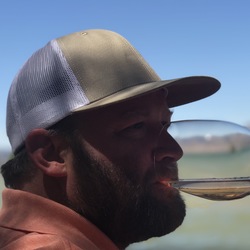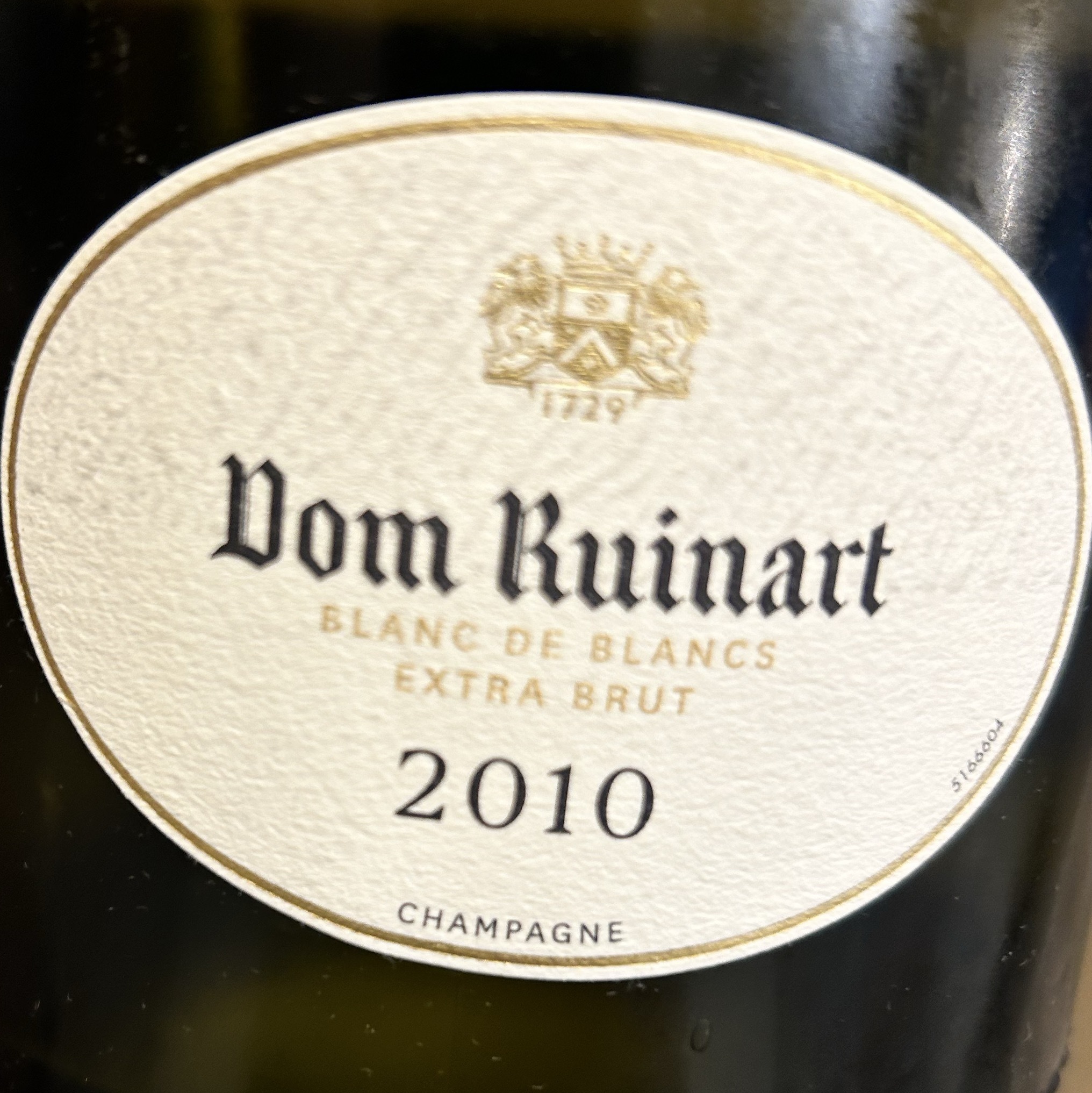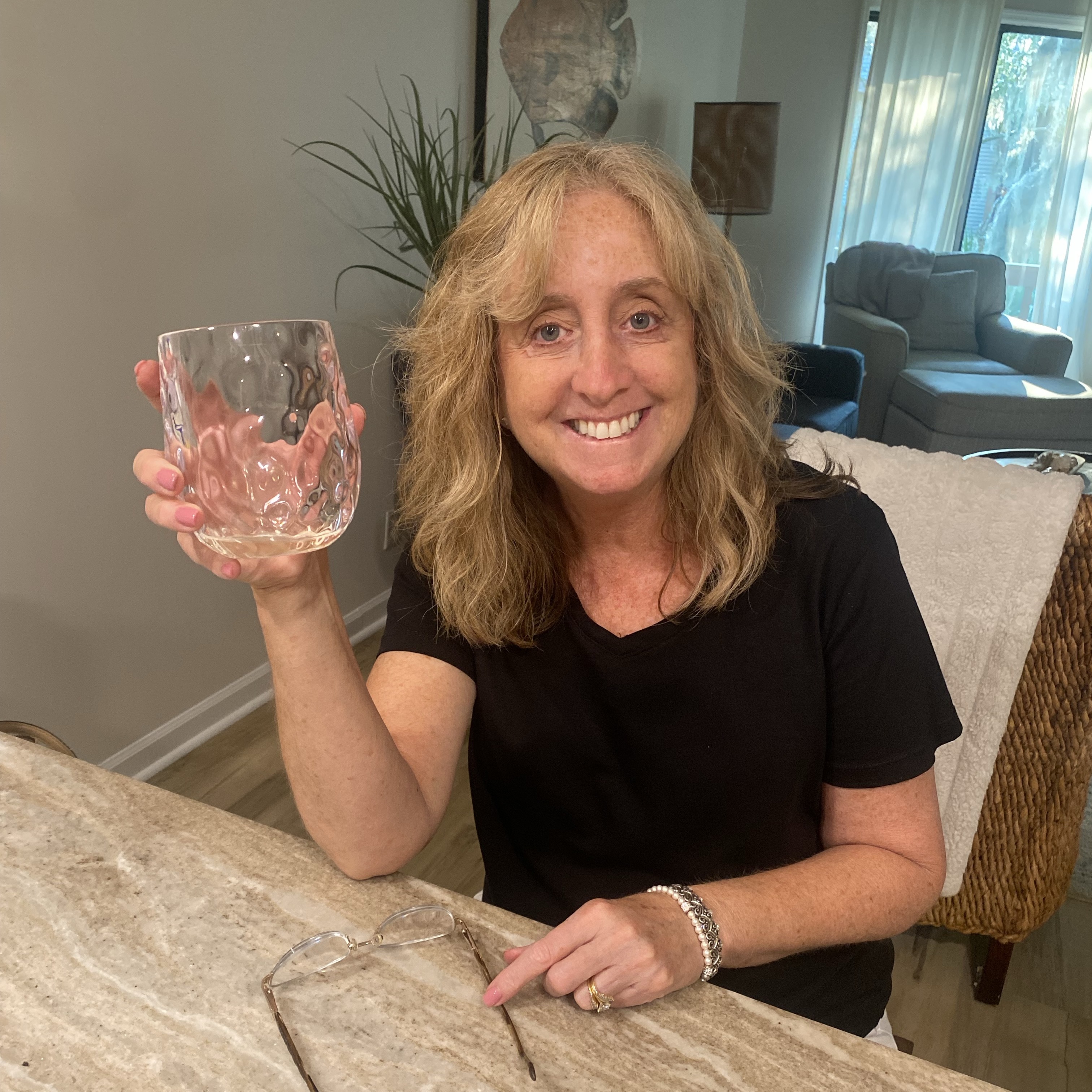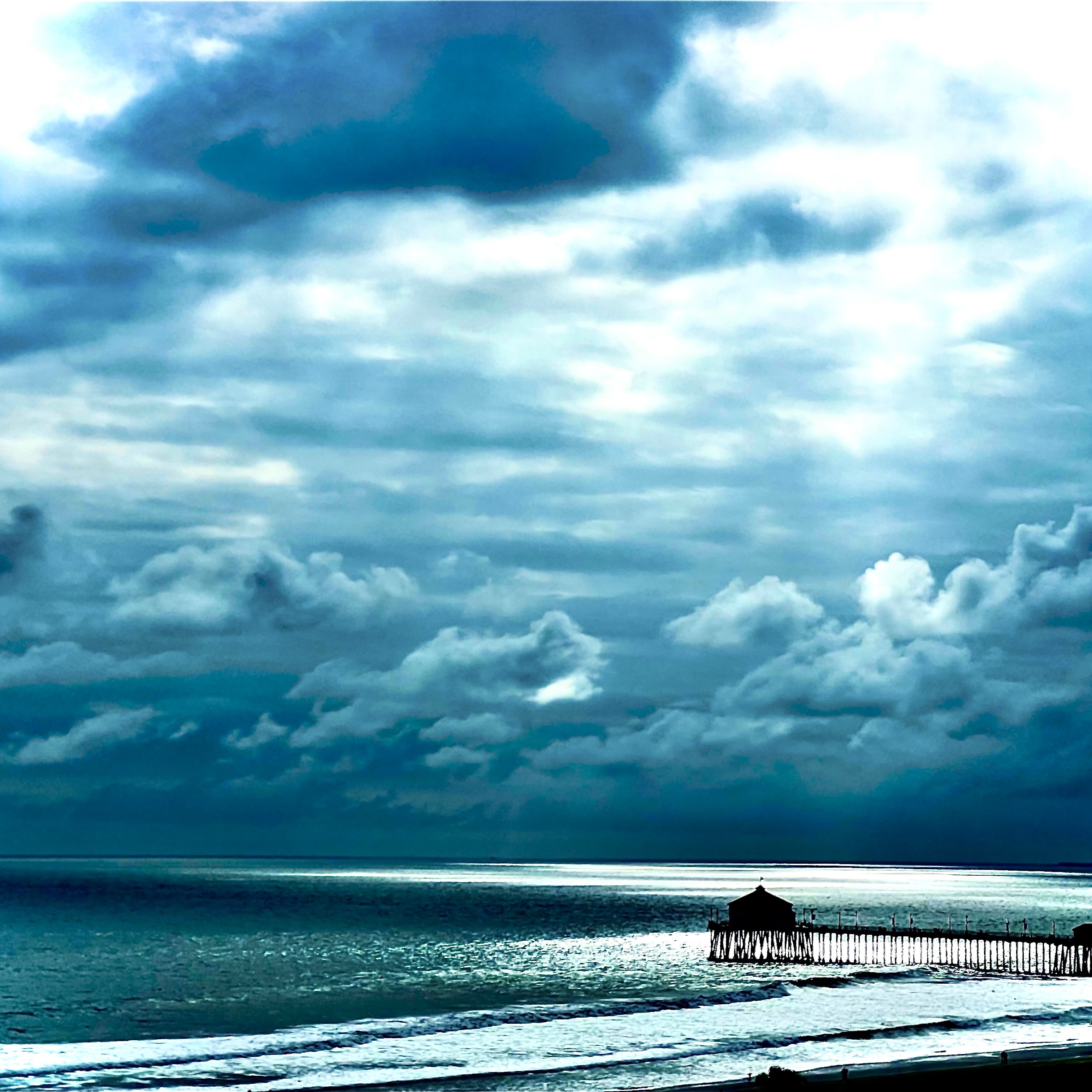Pressing Matters
Greywacke
Wild Sauvignon Marlborough Sauvignon Blanc 2011


Villa I Cipressi
Zebras Brunello di Montalcino Sangiovese 2004
Wife likes it. That's all that matters — 8 years ago
Le Vigne
AmeRhone An American Rhone Styled WIne 2013
Good word play with this take on the Amerone vinification process and Rhone grape variety in America. Amerhone's Syrah grapes were picked, then allowed to dehydrate for 5 days before destemming, pressing and aging this 1800 bottle production in oak for 22 months. All this lent a nutty, pleasantly raisinated and smooth quality Syrah, with violets, leather, black cherry, rice wine, dried fig and plum notes. — 8 years ago
Wieninger
Wiener Gemischter Satz Nußberg Alte Reben White Blend 2009
This is a fantastic white wine! Light gold in color, with green highlights. Lychee, slate, beeswax and more on the nose and palate, with a lithe yet slightly viscous mouthfeel, perfect fruit/acid/alc balance and even a little tannin to complicate matters (pleasantly). And, this one has more years of aging potential, IMO.
Thanks to @Josh Grovefor uncovering this treasure! — 9 years ago
Shippey Vineyards
Rocking Z Vineyard Zinfandel 2012
For years now they have continued to produce a Zin that suits my palette above all other Zins. That's all that matters in the end right....it's big with deep fruits and lots of fun tobacco, pepper, leather and other manly additions. — 10 years ago
Château de Beaucastel
Coudoulet de Beaucastel Côtes du Rhône Red Rhône Blend 2011
Really solid wine with a heat, spiciness and extraction. But in balance. Pair with http://www.doxologywine.com/musings/2015/5/21/matters-of-trust — 11 years ago
Château d'Oupia
Les Hérétiques Pays d'Hérault Carignane Syrah 2013
“It is dangerous to be right in matters on which the established authorities are wrong.”
― Voltaire, The Age of Louis XIV.
However, this wine may actually please both! — 11 years ago
Di Lenardo Vineyards
Just Me Friuli Merlot
Fun Italian red. Dark red color and very full body for a merlot, a result of the vineyard drying the grapes before pressing them — 11 years ago
Contratto
Millesimato Pinot Noir-Chardonnay Blend 2009
Floral with fresh green flowers 36 months on the lees no pressing basically grower Champagne quality — 12 years ago
Dirty & Rowdy
Santa Barbara Highlands Vineyard Mourvedre 2012
Aaaahhh Dirty Durty Duuurty... A little rough out of the gates in the first day, but this wine was just bottled, and judging it now would be as ludicrous as telling a 6 year old he'll never grow up to be a Unicorn Wrangler. Second day it was more intact, more cinnamon spice I associate with good carbonic maceration, not the banana and cotton candy. Bright, fresh red berry fruits, soft mid-palate with sour cherry core, fine but dense tannins and loaded with spice. This wine shows all the right dimensions of being something beautiful, I'd say 6 months and she won't be afraid to show herself to you. 2 years, and you'll wish you'd saved more bottles. Picked at 20.7 degrees Brix, whole cluster fermented, "barely" foot tread, more just pushed down with feet to maintain whole berries under the juice to promote carbonic maceration. A fairly aggressive pressing was done at the end of ferment to try to squeeze some tannins out and add a bit of structure and texture. Aged in one 5 year old Demi-muid and one 5 year old French oak barrel. Never racked until bottling. 82 cases made. 11.6% alcohol 3.9 pH — 13 years ago
Krug
Brut Rosé Champagne Blend
There are certain occasions that call for Krug Rosé. So, HBTM! The bottle was corked in the summer of 2014. It’s a blend of 45 reserve wines with the oldest being from 2007 and the youngest 2002. This is why I think Champagne Makers are some of the most talented people making wine. They are constantly blending up to 100 plus wines to bring that bottle to bottle and year to year branded flavor of consistency. On the nose; red & pink spring flowers, cherries, strawberries, watermelon, black cherry, black raspberries, notes of blood orange citrus, baked bread, soft volcanic mineral and elegant chalkiness. The palate is always ridiculously delicate. Micro bubbles, silky rich texture with beautiful soft acidity. The palate fruits are similar to the nose; rich & ripe cherries, strawberries watermelon, black cherry, black raspberries, notes of blood orange citrus with hints of marmalade. Red & pink spring flowers, baguette crust, soft powdery minerals that give the palate a slight sting and super powdery chalkiness done just right. The finish is beautifully rich, textured, revealing itself in layers and lasts minutes. Photos of; Founder Joseph Krug, House of Krug, Winemaker Eric Lebel, Krug’s Clos du Mesnil, a small plot of 1.85 hectares of Chardonnay...one of the world’s greatest vineyards and their salon tasting room. Producer history & notes...Krug was founded by Joseph Krug in 1853. They are based in Reims, the main city in France’s Champagne region. It is one of the famous Champagne houses that formed part of the Grande Marques. Today the house is majority owned by the multinational conglomerate LVMH, which owns Moët Hennessy, Louis Vuitton S.A. and who’s wine producer portfolio includes other well known wine brands such as; Moët & Chandon, Veuve Clicquot, Château d'Yquem, Ruinart & Cheval Blanc, Dom Perignon and many others. Despite LVMH's majority ownership, the family is still actively involved in all the key decisions of the house but does not manage the day-to-day operations. Joseph Krug was born Johann-Joseph Krug, a butcher’s son, in Mainz, on the Rhine in 1800 when the city was part of the Napoleonic Empire. Having dispensed with the name Johann, he left Mainz in 1824 and in 1834 moved on to Paris. Germans were in demand in France as accountants and bookkeepers. So, Joseph joined Champagne Jacquesson in Châlons-sur-Marne. He spent eight years with Jacquesson. His work took him beyond accountancy. He went around Europe testing the market and assessing criticism from wine sellers and customers. He learned about composition and taste so that by 1840 he already seemed to have been blending Champagne for at least one other house. In 1841, he married Emma-Anne Jaunay. The daughter of a French hotelier based in London’s Leicester Square. The following year their son Paul Krug was born. In 1842 he moved to Reims and following a year later, Krug et Cie was founded with his partner, Hyppolite de Vivès. Joseph was fluent in French, English and German and even spoke some Russian, putting the company in position to exploit key overseas markets. Joseph died in 1866 and was succeeded by his son Paul Krug, who had been trained by his father to takeover. Joseph under the supervision of Paul, Krug was established as a Grande Marque. By the 1880s the prestige of Krug was acknowledged in the United Kingdom and became the primary overseas market for Champagne. In 1866, the House moved into Rue Coquebert, in Reims as it remains. After Paul’s death in 1910, he was succeeded by his son, Joseph Krug II. However, during World War I Joseph II was taken prisoner and his wife Jeanne played a key role in the House at a time when the Western Front divided the region between the Allies and the Germans. After the war, Joseph II’s slow recovery led to his nephew Jean Seydoux becoming joint manager in 1924. In that decade, the Krug 1926 and 1928 vintages were created, which have been considered by critics to be amongst the greatest Champagnes. Lawyer and wine writer Maurice Healey declared “Krug” the king of all Champagnes. Further, “that the 1928 Krug was the best wine made in the present century.” By the mid-1930s, Paul Krug II, the son of Joseph II, was active in the business and would become head of the House from 1959 to 1977. His father died in 1967, by which time he was, according to Patrick Forbes, “one of the most popular and respected figures in the Champagne district.” In 1962 Henri Krug, the son of Paul II, joined the management, as did his brother Remi three years later. Their arrival was followed by a series of innovations, including extensions in the range of Champagnes. In 1979, for the first time, a graduate winemaker joined the House. In January 1999, the House became part of LVMH and by 2007, the brothers, while remaining on the tasting committee, had stepped down from day-to-day responsibilities. In 2009 Olivier Krug, the son of Henri, became House Director. At harvest, Krug grapes are pressed close to their plots with the first juice kept for 24 hours in a vat prepared for the fermentation stage. The pressing from each plot is vinified separately. A pressing contains 4,000 kilos of grapes and yields 20.5 hectolitres of first juice (cuvée), which is poured into twelve oak casks chosen at random. Once fermentation is complete, the eleventh and twelfth casks are used to top up the other ten casks in order to protect the new wines from oxidation. For fifteen days, each cask is topped up with wine from the same plot. Krug uses small 205 liter oak casks tailor-made from trees that are more than two centuries old in the forests of Hautes Futaies in Central France. The average age of Krug oak casks is 20 years. They are retired after approximately 40 years of use. The wines remain in the casks for several weeks. During this period, clarification occurs naturally from the cool temperature of the cellar given the coming winter, as does a micro-oxygenation process from the use of natural containers, making the wine more resistant to oxygen over time. Finally, between December and January, the wine is drawn off into small stainless-steel vats. From here, depending on the decisions of Krug’s tasting committee, the wines will either contribute to that year’s assemblage or be stored in steel vats in the House’s library of 150 reserve wines to be used in the blend of a future Krug Grande Cuvée and or Krug Rosé. — 8 years ago


Jean et Sébastien Dauvissat
Montmains Chablis 1er Cru Chardonnay
Great afternoon white. Remember "White Wine Matters ! " — 9 years ago
Bernard Levet
Les Journaries Côte-Rôtie Syrah
A tiny whisper of brett? Maybe. Maybe not. What matters here is a silky texture and an evolving and complex palate of flavors. A delicious and versatile wine. True to its place. Paired well with both pork and beef tonight. At 12.5 abv an almost dangerously easy bottle. Great to become with this producer. — 11 years ago
Pressing Matters
R9 Coal River Riesling 2014
This Tasmanian winery make four different Rieslings based on different residual sugar levels. — 11 years ago
Michel Guignier
Bio Tradition Morgon Gamay
Varietals: Gamay
Organic: Certified
Biodynamic: Practicing
Vineyard: From La Roche Pilée vineyard in the heart of the Morgon appellation at the base of the famed Cote du Py hillside (1.70 hectares).
Orientation: South facing with a slight slope.
Soil: "Decomposed granite and crumbly schist referred to regionally as "rotten rock"". Natural composting kick-starts bacterial activity in the soil that is very beneficial to the vines. "
Viticulture: 60-year-old vines with very low yields. Extensive pruning to further limit the yield; No chemical pesticides, fertilisers or herbicides used, giving a totally natural wine; all bunches are picked by hand and very carefully sorted to retain only the fully ripened whole bunches.
Vinification: No sulphur pitched for fermentation. Semi carbonic maceration for up to 12 days. Using an old vertical press, pressing is very slow and gentle, crushing only the fruit and not the seeds.
Aging: In barrels on fine lees between 5 and 13 months. The barrels are old as the aim is to allow the wine to breathe without giving it a woody taste. The end of alcoholic and malo-lactic fermentation takes place in oak barrels. Light sulphur is added after malo-lactic fermentation and at bottling to ensure the wine keeps well over time.
Notes: Bio-Vitis is the name Michel Guignier gave to this wine composed of 100% Agribio-certified fruit from La Roche Pilée, a site located at the base of the famed Cote du Py hillside in Morgon. The wine is a selection of old vines that are barrel fermented in neutral oak. It is the most structured wine in the Guignier lineup with classic red fruit character, sappiness and a seductive, round mouthfeel. — 11 years ago
Eric Pfifferling (Domaine de l'Anglore)
L'Anglore Tavel Rosé Blend 2012
Great wine, bad pizza. Lunch break with the great T-dub Tim Losch... Electric Tavel Rosé from Mssr. Pfifferling between pressing old vine Carignan and treading Syrah/Viognier. #harvest2013 — 12 years ago
Marqués de Cáceres
Crianza Rioja Tempranillo Blend 2013
Omigosh still studying the wines that may turn up on my next test. This wine has the tart/sweet cherries and plums. And some leather and dried herbs and almost what I thought was caramel but I am realizing coconut eaters (I hate coconut) might call sweet coconut. And there is a finish of...well now that I’ve been sniffing dried dill for a couple months in able to be able to identify I’d call dill and balsamic in the finish. Would I call it Tempranillo in a blind tasting? Now that I know my good guy dill maybe. That doesn’t matter on Delectable. What matters is this is a moderately priced wine you can easily find that would prove tasty probably especially with a bacon-y (in my veg imagination)/roasted bell pepper/stewed dish. I dunno. This wine is an easy drinker maybe not for the masses but for those of us who dig BIG wines this is an easy and damn tasty wine. I also would try it with a salad with roasted veg and a balsamic dressing. I feel that pairing would do it right. — 8 years ago

Tyler
Santa Barbara County Pinot Noir 2016
Bright red, both in color & taste, tempered by what tastes like some whole cluster pressing. Fun, bright, & a wee bit Of Burgundy — 8 years ago
Anakota
Helena Dakota Vineyard Cabernet Sauvignon 2009
(My portfolio) Yes oh yes! This has aged SO well! Nicaraguan tobacco, mocha and black earth. The nose is a bit muted at the moment but it hardly matters when this hits the palate. The tannins are amazingly well integrated and the finish is more than 2 minutes in length.... — 9 years ago
Weingut Hermann Moser
Karmeliterberg Kremstal Grüner Veltliner 2015
Everlasting pin point acidity with lemon zest, green pear, papaya and funky honeydew melon. Classic white pepper and snap peas on the nose. Citrus oil and flint pressing on the palate. Digging the arugula bouncing off the body. Refreshing and lively. Cheers! — 9 years ago
Kuyam
Cuvée Nolan Santa Barbara Highlands Vineyard Cabernet Sauvignon Blend 2006
Took a while to open up. Figs, wet flowers, buttered toast, and chocolate aromas with a some alcohol. Lime acidity, flavors of nutmeg, blackberries, honeydew, plum, and something reminiscent of a forest fog. Bright up front, immediately followed by an intense dryness. Finishes with wood, like pressing your tongue on a 2x4, but not unpleasant. This wine brought up a lot of fond memories, odd how that can happen. — 10 years ago
Lucien Aviet & Fils
Caveau de Bacchus Arbois Trousseau 2013
Full name is the Trousseau Marne Rouge Reserve du Caveau Cuvee des Geologues in case that matters.... but it's a super-pretty Trousseau. Not like those funky poulsards from the Jura, this is really about fresh, just-crushed fruit even though its gentle concentration makes it spritely and thirst-quenching. It's clean and vibrant - no funk here, though it does have just a shade if cedary oak. — 10 years ago
Carpineto
Dogajolo Toscano Chardonnay Blend 2013
Lovely. I am not Sauvignon Blanc fan in general, and this initially had that very green nose that you frequently get with that varietal despite its being a blend. After being open in the glass for about five minutes that intense green aspect goes away and you are left with something that is beautifully balanced and flavorful with good acidity that never tips over into harshness. Not that it matters a whit, but it has the prettiest label I have seen in a long time. An excellent value! — 11 years ago
Michel Guignier
Beaujolais Gamay
Region: Beaujolais
Appellation: Beaujolais
Wine type: Red
Varietals: Gamay
Organic: Certified
Vineyard: The Beaujolais appellation spreads over 30 km between Saône Valley and Haute-Azergues and Haut-Beaujolais hills from North to South. This wine is primarily made with fruit from the Morgon sector.
Orientation: South facing with a slight slope.
Soil: Decomposed granite and crumbly schist referred to regionally as "rotten rock".
Viticulture: The vines are 40 years old; they are pruned quite extensively to limit the yield; all the bunches are picked by hand and then very carefully sorted to retain only the fully ripe, whole bunches.
Vinification: Semi carbonic maceration for up to 7 days. Traditional Vinification temperature: 22° C at the beginning of fermentation and 32° C at the end. On pressing, cooling to 22° C to retain as much aroma and flavor as possible.
Aging: In vats on the lees. All terroirs vinified and aged separately.
Production: 550 cases
Notes: Lacy and charming with a suprising amount of structure for an entry level Bojo. — 11 years ago
AmByth Estate
Priscus White Rhone Blend 2011
Tremendous acid and concentration. Dry farmed...it matters. — 12 years ago
Brouwerij Oud Beersel
Oud Beersel Oude Geuze Vieille
After a very long day of wine talk and "pressing the flesh" nothing beats a really sour Geuze on the late Metra back to Cook County... — 13 years ago























Isaac Pirolo
90° at 7pm calls for more Marlborough Sauvignon Blanc.
.
Cloudy Bay was founded in 1985 by David Hohnen of Margaret River’s Cape Mentelle along with its first winemaker, Kevin Judd, who would go on to spend 25 years there before creating his own label, Greywacke. Judd is widely considered as the pioneer responsible for elevating New Zealand wine to its current status. Judd also happens to be one of the best wine photographers in the world (I highly recommend his ‘The Landscape of New Zealand Wine’).
.
According to Master of Wine Bob Campbell “the genesis for Greywacke Wild Sauvignon was Cloudy Bay Te Koko; a funky, barrel-fermented sauvignon blanc that bent all the rules when it was made in 1992 and initially sold only through the cellar door. Greywacke Wild Sauvignon is a blend from 10 different Marlborough vineyards which are machine-harvested at night. After pressing the juice is settled before being pumped into mostly old barrels and fermented using indigenous yeasts (about 15-20 different strains). The wine undergoes a partial malolactic fermentation and lees stirring.”
.
Incredible aromatics... an almost vibrant herbaceousness... red bell pepper, grapefruit zest, tangerine, apricot, and cucumber, with a silky smooth mouthfeel unlike most Sauvignon Blancs. Extraordinary. — 8 years ago